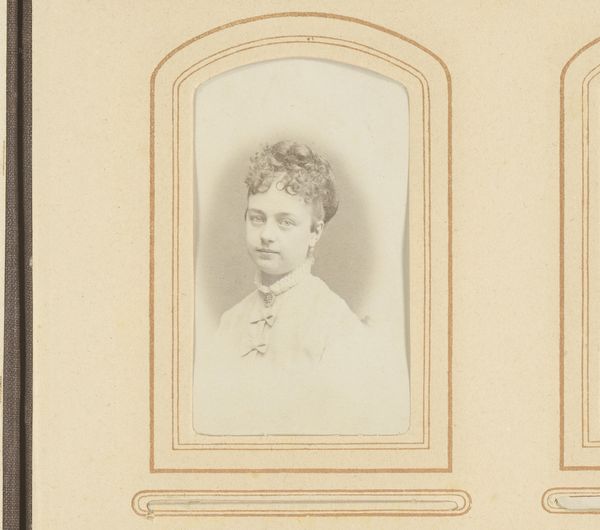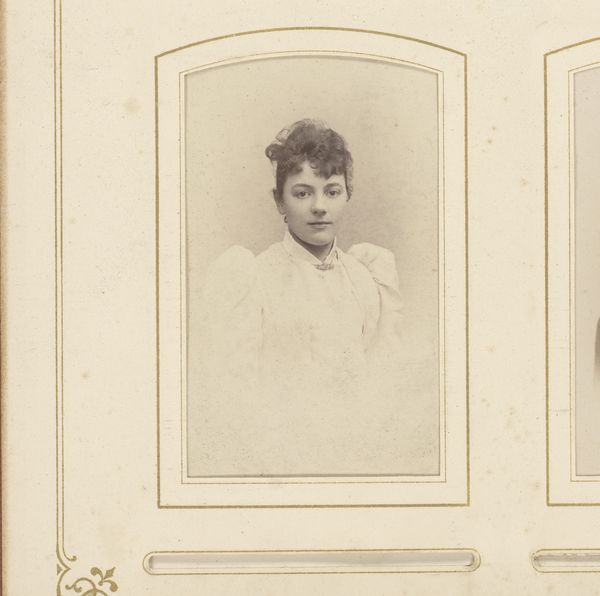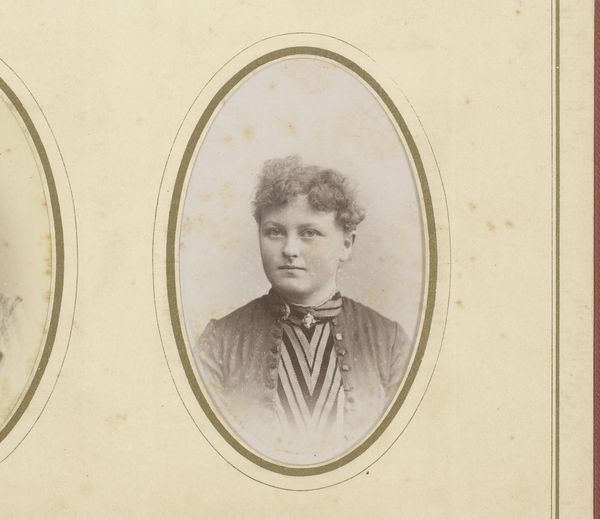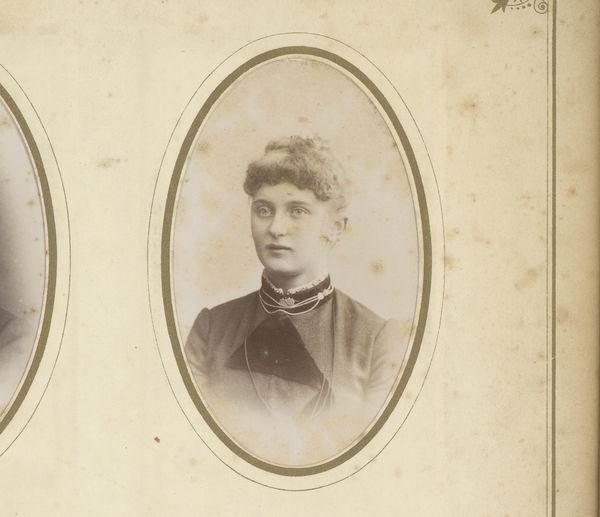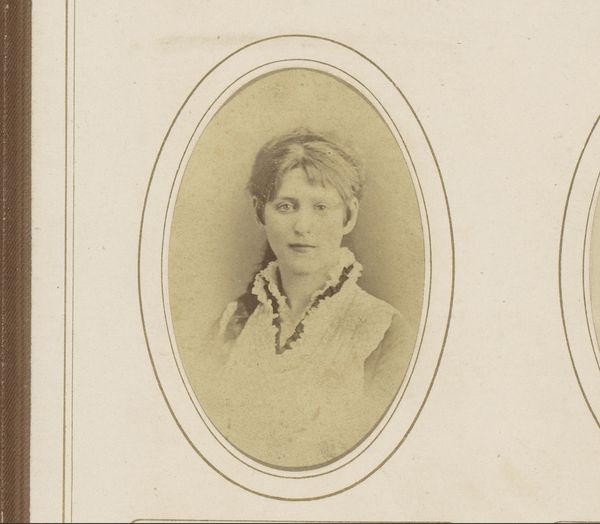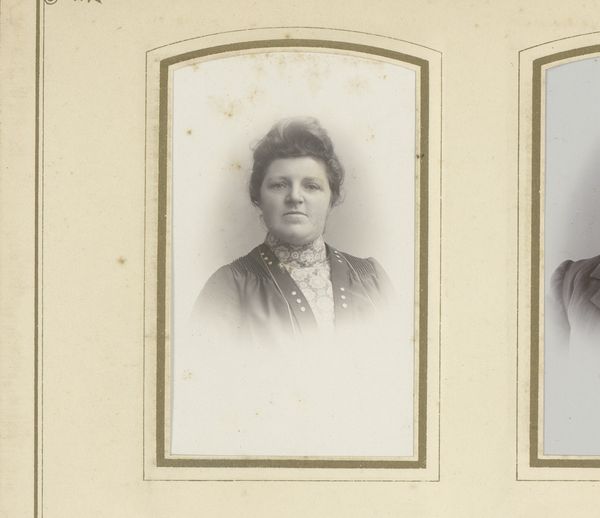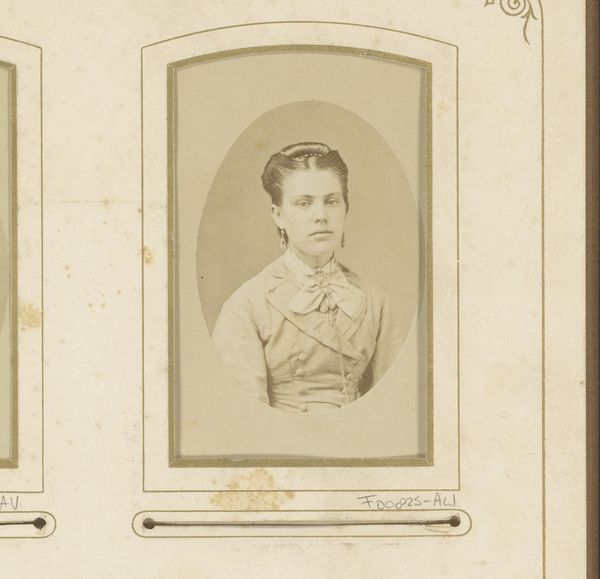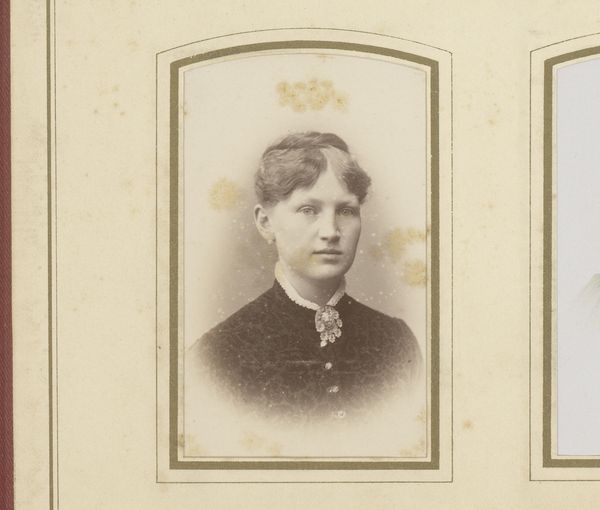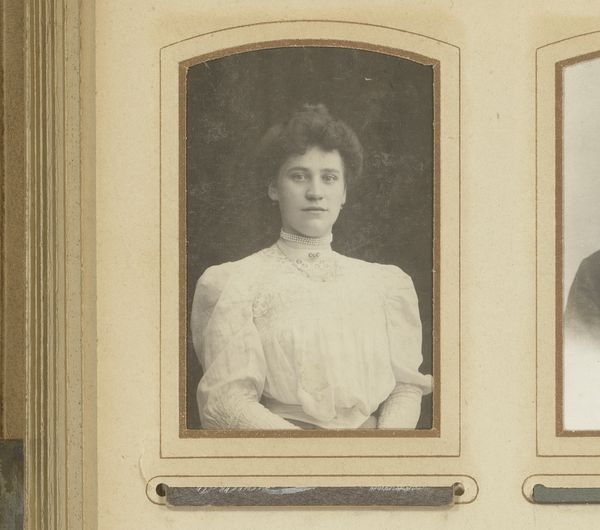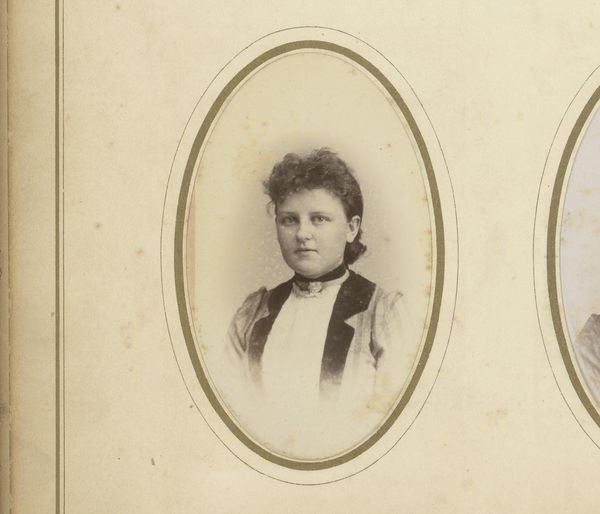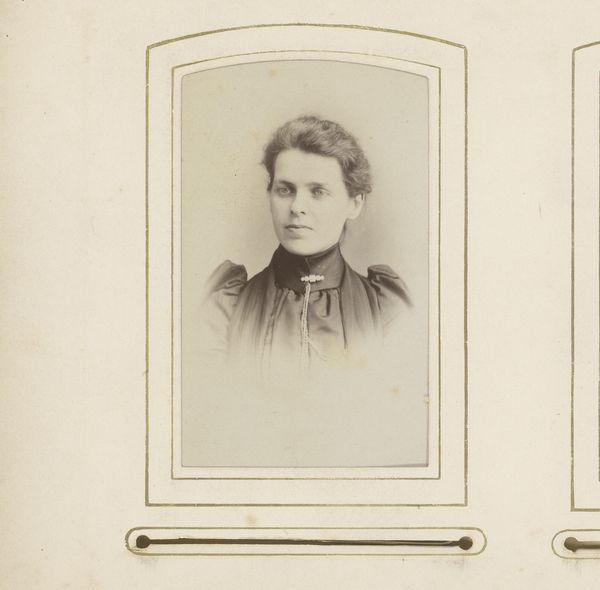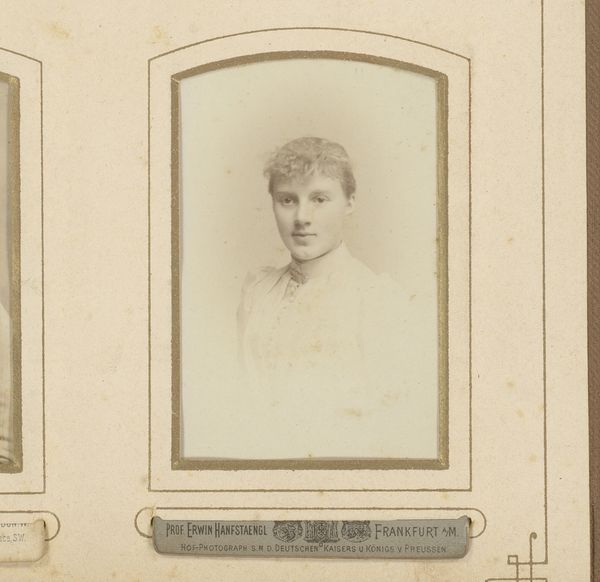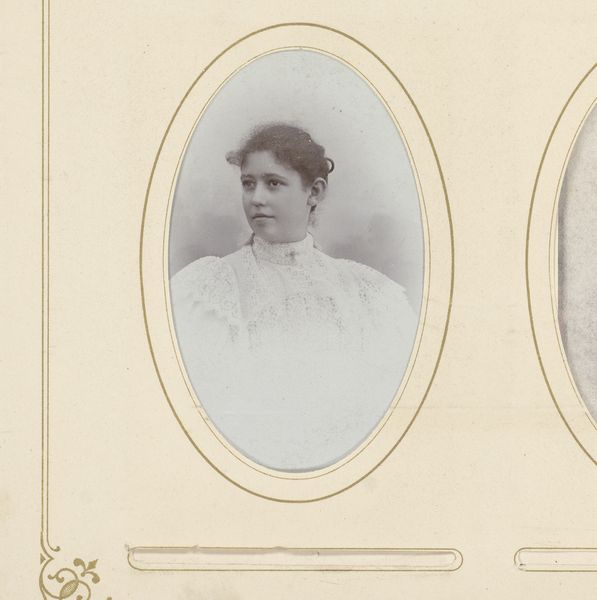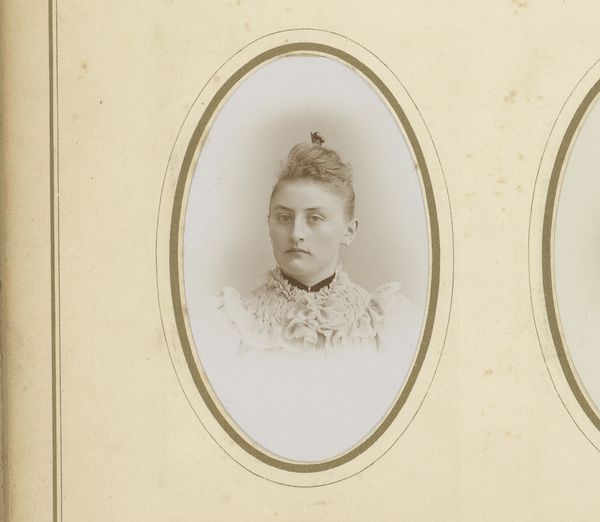
print, photography
#
portrait
# print
#
sculpture
#
charcoal drawing
#
photography
#
genre-painting
Dimensions: height 87 mm, width 53 mm
Copyright: Rijks Museum: Open Domain
Curator: Let's discuss this photographic print entitled "Portret van een vrouw", dating roughly from 1888 to 1900, by W. Koolstra. It’s a delicate piece, isn’t it? Editor: It does seem very contained, formally speaking. The oval frame-within-a-frame definitely gives it a preserved feeling, almost like an object studied under glass. I’m wondering what sort of album this came from and what paper the photographic emulsion is coated on. The lack of a perfectly stable base support clearly affects its material degradation. Curator: That enclosure you describe strikes me as distinctly Victorian. Photography at the time, although gaining popularity, was still considered a precious medium, something to safeguard from the vagaries of daily life. Albumen prints like this were prized possessions, status symbols to be displayed, and, of course, protected. Editor: Yes, the context certainly points toward the rise of a particular class, probably within the context of burgeoning industry and capitalist accumulation; that formal setting acts as a framing of the subject herself, highlighting the artifice in these posed photographic situations. What kind of social expectations went into this “genre painting” presented in photographs? Curator: Precisely. It echoes, perhaps intentionally, the formal portraiture of the gentry, now made accessible to the middle class. And the conventions around presentation–dress, pose, even expression–tell us a great deal about prevailing social mores and the image one sought to project. Notice the careful arrangement of her hair, the placement of that necklace. Everything suggests refinement and propriety. Editor: Well, I also look at it in the context of women in factories at the same time that this photograph was taken. To me, even the choice of pearls reflects labor, but maybe in its artifice the labor is transferred to a colonized subject who harvests those organic gemstones, rather than being about any inherent value within her. Curator: That's a fascinating point. Thinking about this photograph as a construction—a consciously fashioned performance—certainly complicates any straightforward interpretation of inherent worth. These small portraits carry an interesting power in how we look back into our history and who had the privilege of having that gaze. Editor: And the conditions under which such images were crafted, by whom, for what ultimate purpose. So much more than just the image itself! Curator: Exactly. By looking beyond the immediate image, and digging into the context of its creation and use, we gain such insight. Editor: Yes, this close inspection lets the artwork begin to unravel a few of its inherent contradictions in surprising and relevant ways!
Comments
No comments
Be the first to comment and join the conversation on the ultimate creative platform.
